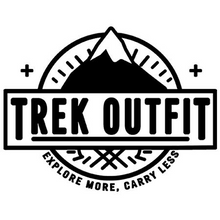Mastering Navigation: Essential Map and Compass Skills for Every Trekker
For any outdoor adventurer, mastering the art of navigation is a fundamental skill that ensures safety and confidence on the trail. While technology like GPS is useful, nothing beats the reliability of a map and compass when trekking in remote areas. In this guide, we’ll walk you through the basics of map and compass navigation, ensuring you can navigate confidently on your next adventure.
1. Understanding Topographic Maps
Topographic maps are designed to represent the terrain of an area, showing features like mountains, valleys, rivers, and trails through contour lines. Learning how to read these maps is the first step in mastering navigation.
- Contour Lines: These lines indicate elevation. The closer the lines are to each other, the steeper the terrain. Wider spacing between lines means a gentler slope.
- Map Scale: Pay attention to the map’s scale, which tells you how distance on the map relates to real-world distance. A common scale for trekking maps is 1:24,000, meaning 1 inch on the map equals 24,000 inches (or 2,000 feet) on the ground.
- Legend: Use the legend to understand the symbols representing trails, roads, water sources, and other important features.
2. Compass Basics
A compass is one of the most reliable tools for navigation, and knowing how to use it is essential for every trekker. Here’s how to get started:
- Orienting the Map: Before you can use a compass to navigate, you need to orient your map to match the landscape. Line up the compass’s north arrow with the map’s north. Now the map reflects the real-world terrain.
-
Setting a Bearing: A bearing is the direction you want to travel. To set a bearing:
- Point the compass in the direction you want to go.
- Rotate the compass housing so the needle lines up with north.
- The number at the top of the housing is your bearing.
- Following the Bearing: Once you have a bearing, keep the compass needle aligned with the north mark as you walk, ensuring you stay on course.
3. Navigating in Different Terrains
Navigation skills vary depending on the type of terrain you’re trekking through. Here’s how to adjust your approach for different environments:
- Forest: In densely wooded areas, it’s harder to see landmarks. Use your map to identify prominent features like hills or rivers to keep track of your location.
- Mountains: Pay close attention to contour lines on your map to avoid steep cliffs or dangerous slopes. Setting a bearing with your compass is crucial when trekking at high elevations where landmarks might be harder to distinguish.
- Desert: With fewer natural landmarks, it’s important to rely on your compass and follow your bearing precisely. Make note of any unique rock formations or other features that can help you navigate.
4. Combining GPS with Traditional Navigation
While it’s essential to know how to use a map and compass, GPS devices can also be helpful for tracking your location. The HikeGuard+ Smart Safety Device (Pre-order Now) allows you to stay safe on your trek, offering SOS functions and real-time location tracking. Just remember that GPS signals can fail in certain environments, so always carry a physical map and compass as backup.
Pro Tip: Practice Makes Perfect! Before heading out on a multi-day trek, practice your navigation skills in a familiar area. The more comfortable you become with your map and compass, the more confident you’ll feel when venturing into remote regions.
Featured Products:
- Trek Outfit Tactical Hiking Stick with Compass and Tools, $59.99 – This versatile hiking stick includes a built-in compass to help guide you on the trail. Shop Now
- HikeGuard+ Smart Safety Device, Pre-order $149.99 – Stay safe with real-time tracking and SOS features, perfect for long treks. Pre-order Now
- 2-Pack Trek Outfit 20-in-1 Tactical Survival Bracelet, $14.99 – With an emergency whistle, fire starter, and compass, this bracelet is an essential tool for every trekker. Shop Now





Leave a comment